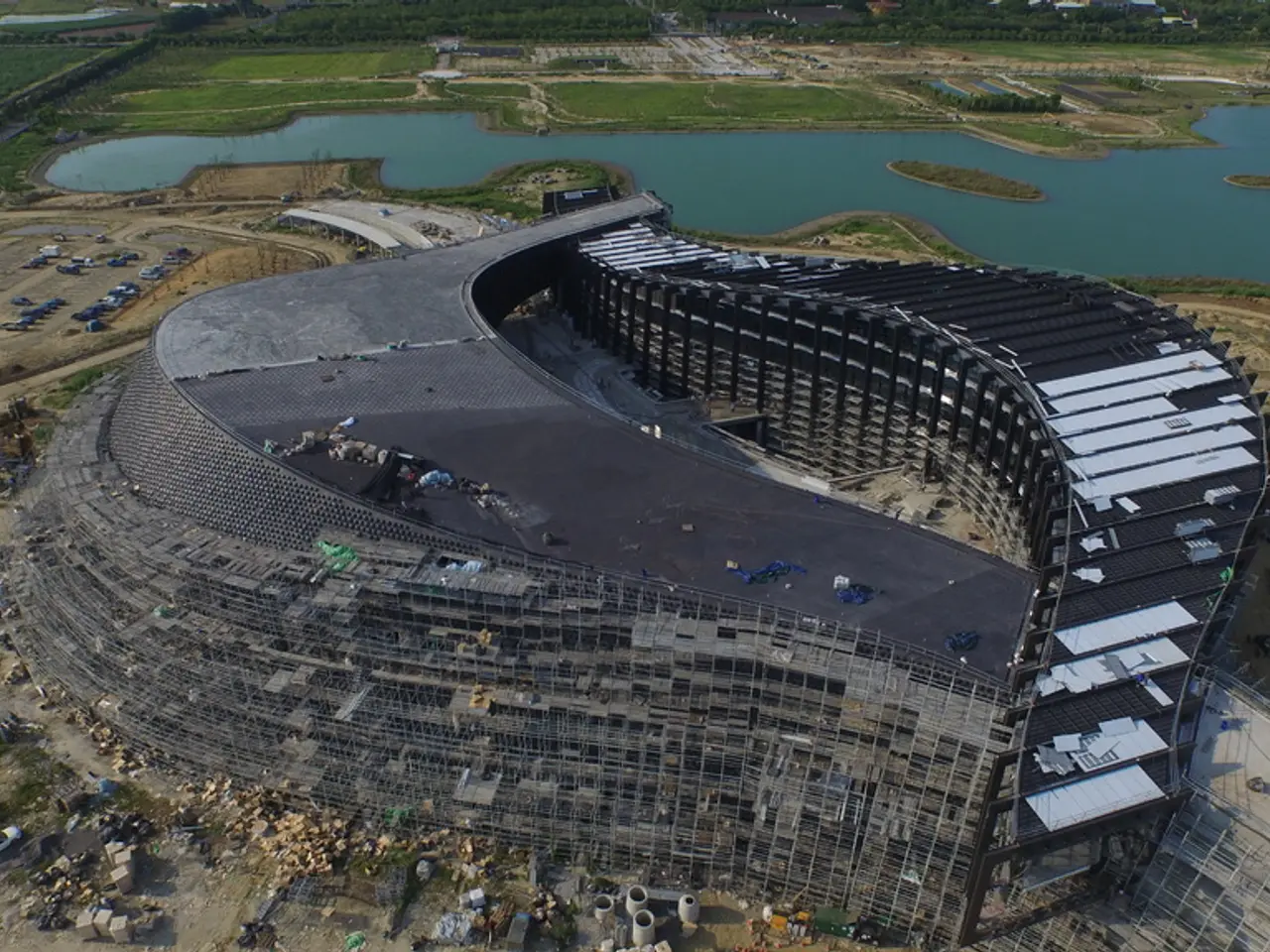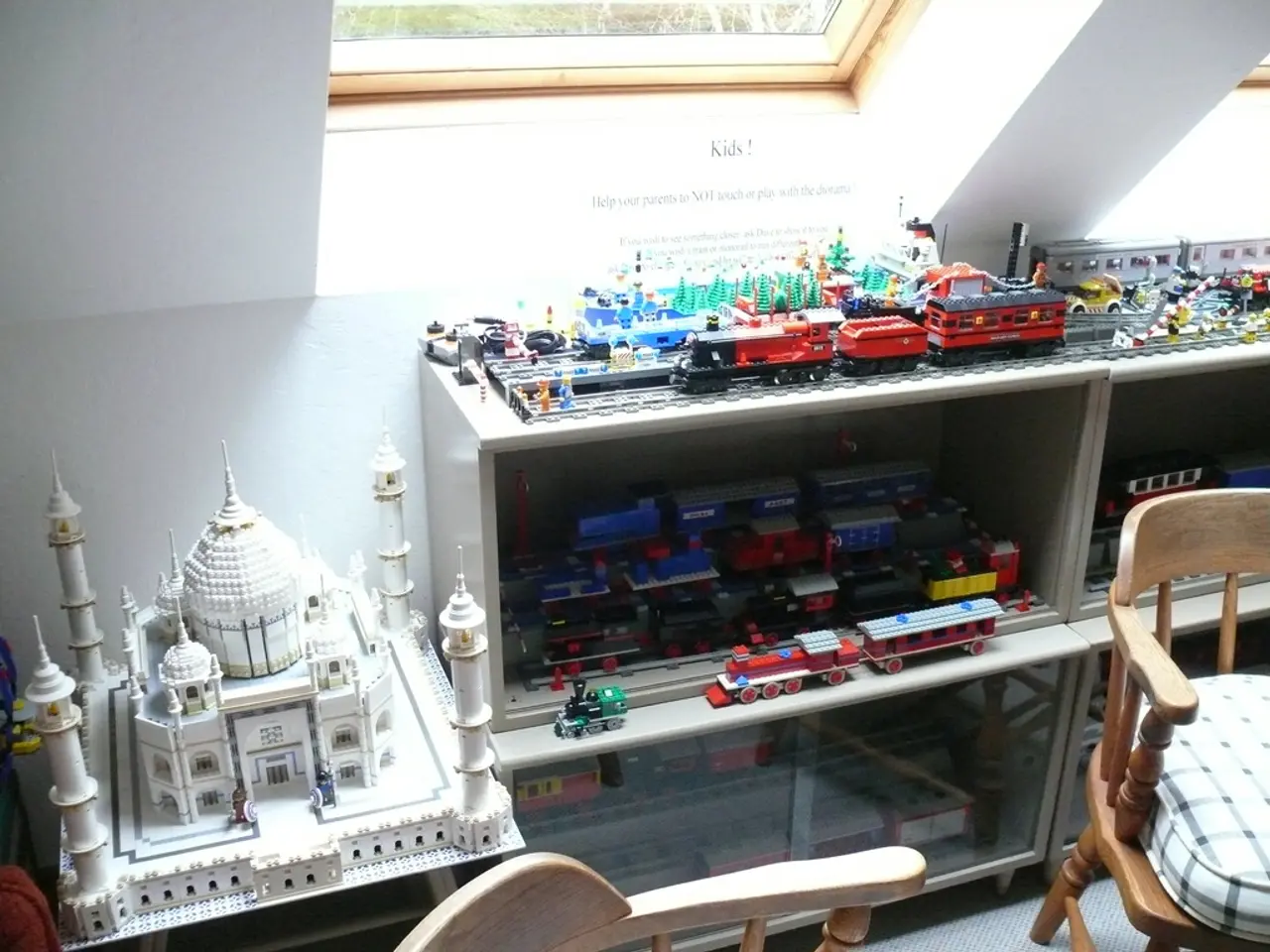Industry and Climate Transition: The Halted Hydrogen Venture in Bremen
Hydrogen project in Bremen temporarily paused by EWE - Hydrogen venture in Bremen halted by EWE.
Energy provider EWE has temporarily paused its plans to establish a substantial hydrogen facility in Bremen's Mittelsbüren site. Initially part of the "Clean Hydrogen Coastline" program, the company has cited current market conditions as the reason for this decision, according to the "Nordwest-Zeitung."
Now, EWE is examining different options and funding mechanisms to move forward. The proposed facility's primary function was to support climate-neutral steel production in Bremen, among other objectives.
Green hydrogen continues to be a crucial element in the decarbonization of industries and future energy supplies, according to EWE, based in Oldenburg.
ArcelorMittal's decision not to convert its Bremen and Eisenhüttenstadt plants to green hydrogen production is seen as a consequence of this pause. EWE views this decision as a reflection of the formidable challenges in industrial decarbonization.
While three other sub-projects of the program remain on schedule, including a 320-megawatt hydrogen production facility in Emden, a significant hydrogen storage facility in Huntorf, and the development of pipeline infrastructure, a smaller 10-megawatt electrolysis project in Bremen is already under construction. Hydrogen produced from this project will be directed towards integration into existing processes or sold to third parties.
Stefan Dohler, EWE's CEO, has called for reliable political frameworks for the hydrogen economy. "Industry transformation will only be successful if hydrogen is not just politically popular, but also economically viable," said Dohler. "Germany and Europe need to deliver: on electricity prices, promotion, and infrastructure. Only then will trust be established, necessary for billion-euro investments."
Industrial Decarbonization's Struggles
The industrial sector is grappling with significant hurdles in decarbonization, particularly in energy-intensive industries like steel, cement, and chemicals, responsible for a significant share of global carbon emissions. One illustration of these challenges is the temporary halt of EWE's hydrogen project in Bremen, a project aiming to leverage hydrogen as a clean energy solution for industrial processes.
Economic Obstacles
- Costly Transition: Heavy industries require substantial capital investments for low-carbon technology, but the business case remains challenging to justify without clear demand and a willingness to pay for green materials.
- Investment Risks: Upstream producers, such as smelters and refineries, face significant costs to transition away from fossil fuels, while downstream consumer brands have stronger incentives due to their public climate commitments and comparatively small green premiums on final products.
Technical and Infrastructure Hurdles
- Tech Limitations: Hydrogen, a promising decarbonization pathway, faces technical challenges, including limited electrolyzer options, hydrogen embrittlement, compression inefficiencies, and storage issues.
- Infrastructure Struggles: Infrastructure development is slow, and the costs of clean hydrogen remain several times higher than those of fossil-based hydrogen, necessitating sustained government subsidies and market frameworks to bridge the gap.
Policy and Regulatory Uncertainties
- Policy and Regulatory Clarity: Stable and adaptive policy frameworks are vital for driving long-term investments in industrial decarbonization. While some nations have made progress, global advancement has slowed recently. Regulatory certainty, implementation capacity, and long-term commitment are essential to mobilize the considerable capital needed for energy transformation in industry.
Steel Industry-Specific Barriers
- Decarbonizing Steel: Steel production, responsible for approximately 25% of energy and process-related CO2 emissions, requires the adoption of advanced technologies, such as DRI-EAF (Direct Reduced Iron - Electric Arc Furnace) incorporating hydrogen or natural gas, CCS (Carbon Capture and Storage), and increased scrap recycling. Despite high costs, without cost reductions, less effective measures like fuel switching or reduced demand may dominate, resulting in less substantial emission reductions.
The Standstill of EWE’s Hydrogen Project in Bremen
EWE's hydrogen project in Bremen, an essential effort to decarbonize industry via green hydrogen, has been temporarily suspended. Although specific reasons were not provided in the available data, this pause signifies broader industry challenges such as:
- Economic concerns related to the high costs of green hydrogen production and infrastructure.
- Technical and operational obstacles in scaling up electrolyzer capacity and hydrogen integration.
- The necessity for clearer regulatory support and sustained policy incentives to make such projects viable.
Pathways Forward
- Policy Support: Governments can strengthen frameworks to provide long-term certainty, incentivize investments, and align decarbonization efforts with industrial strengths, including subsidies, certification standards, and cross-sector planning.
- Technological Innovation: Advancements in electrolyzer technologies, scaling manufacturing, and solutions to storage and infrastructure bottlenecks are critical. Research and deployment tailored to specific industrial applications will increase efficiency and lower costs.
- Coordination Along the Value Chain: Linking upstream producers with downstream buyers who appreciate green products can create markets for low-carbon materials and improve the economics of industrial decarbonization.
- Combination of Strategies: Especially for steel, combining recycling, energy efficiency, fuel switching, and advanced production technologies can maximize emission reductions. Gradual technology deployment aligned with cost trends can accelerate progress toward mid-century climate objectives.
- Targeted Application of Hydrogen: Rather than forcing hydrogen adoption in every scenario, matching hydrogen use to hard-to-abate sectors like steel production, heavy transport, and seasonal energy storage can optimize its impact and feasibility.
- EWE's temporary pause in establishing a hydrogen facility in Bremen, initially part of the "Clean Hydrogen Coastline" program, highlights the crucial role of green hydrogen in the decarbonization of industries and future energy supplies.
- The proposed facility's primary function was to support climate-neutral steel production in Bremen, but its halt may be a reflection of the formidable challenges in industrial decarbonization, particularly in energy-intensive industries like steel, cement, and chemicals.
- The industrial sector grapples with significant hurdles in decarbonization, including costly transition, investment risks, technical and infrastructure hurdles, policy and regulatory uncertainties, and steel industry-specific barriers.
- To move forward, governments can strengthen policy frameworks, advance technological innovation, coordinate along the value chain, combine strategies, and apply hydrogen in targeted sectors like steel production, heavy transport, and seasonal energy storage.




